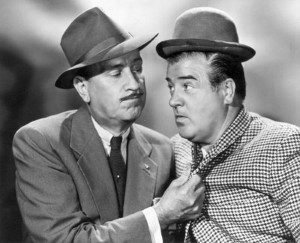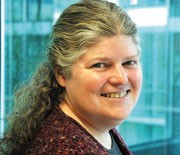When scientists collaborate on an experiment and a paper, it can be hard to decide who gets the credit and how much.
Stephen Kosslyn first started to consider how author lists come together when he found himself mediating a dispute. A postdoc and a graduate student each wanted to be listed as the first author on a study. “They both had a case,” recalls Kosslyn. “It got heated.”
Disagreements often happen when contributors put in similar amounts of effort on different aspects of a project, says Kosslyn, a psychologist at Stanford University in California. For example, one person might have developed the idea for the project and the other performed most of the data analysis. “The force of the dispute usually revolves around the feeling that whatever they did was more important than what the other person did,” says Kosslyn.

Such disputes are common. “As authorship is our academic currency, it tends to be a hot-button topic,” says Karen Peterson, scientific ombudsman at the Fred Hutchinson Cancer Research Center in Seattle, Washington. She says that one-fifth of the disputes she adjudicates concern authorship. Similar conflicts are among the most common issues mediated by the Committee on Publication Ethics (COPE), says Virginia Barbour, the organization's chairwoman and chief editor of PLoS Medicine in Cambridge, UK.
Authorship disagreements can be mitigated with careful discussions, explicit lab guidelines and a good understanding of authorship practices in one's field. There is no perfect approach, but deciding on who gets an authorship credit, and how they are ranked, is a crucial part of doing science responsibly.
Precise statistics on authorship disputes are hard to come by, says Mario Biagioli, a science historian at the University of California, Davis, who has studied authorship. Scientists may be reluctant to admit that they have demanded undeserved authorship or otherwise subverted the system, and the US Office of Research Integrity does not track such disagreements because they are not considered scientific misconduct, says Biagioli, who co-edited the book Scientific Authorship: Credit and Intellectual Property in Science (Routledge, 2002). However, in a 2005 survey1 of researchers who had received a grant from the US National Institutes of Health (NIH), 10% of respondents admitted to assigning authorship “inappropriately”.
Credit confusion
Questions of who deserves credit for a paper are a fairly recent phenomenon, says Biagioli. Once upon a time, a paper had one author, maybe two. But with modern big science and large collaborations, a study might have hundreds or even thousands of authors — as in the case of the ATLAS experiment2 at the Large Hadron Collider at CERN, Europe's particle-physics laboratory near Geneva, Switzerland.
And what authorship means varies by scientific discipline. For example, in particle physics, hundreds of researchers may contribute to the development and maintenance of a single piece of equipment, such as an accelerator. At big physics labs such as CERN, everyone who was working at the lab when the discovery was made gets a slot on the author list — even if they haven't seen the paper, says Biagioli. The authors are usually listed alphabetically, regardless of how much they contributed.
In the biological sciences, by contrast, the author list is often strictly ranked. The top spot is at the end of the list, where the principal investigator gets credit for running the lab. The student or postdoc who actually did the work goes first. As for the authors in the middle, it is hard to tell whether they participated a lot or a little, says Biagioli.
The International Committee of Medical Journal Editors (ICMJE), headquartered in Philadelphia, Pennsylvania, has developed authorship guidelines that are used by many journals and institutions. These rules state that to be listed as an author, each researcher must meet three key criteria: they must have been involved in designing the project, collecting data or analysing the results; they must have participated in drafting or revising the manuscript; and they must have approved the final, published paper. Many universities that have their own guidelines base them on the ICMJE's wording, says Biagioli.

Kosslyn has his own definition: the crucial element, he says, is creativity. For example, a researcher could work with study participants in the lab, but just be following a protocol. “Anybody could have run the subjects, so running the subjects is not enough,” says Kosslyn. To earn authorship, the researcher would be intellectually engaged: they might point out a feature of the data that leads the team to reshape the experiment. The paper wouldn't look the same without them.
The author in question
COPE recommends that researchers decide who will be an author and what order they will be listed in before they even conduct experiments, and that the group revisits the author list as a project evolves. A handshake isn't enough to seal the deal — researchers should keep author agreements in writing.
Whenever they occur, authorship discussions need not be confrontational (see 'Aggravation-free authorship'). Mark Groudine, deputy director of the Hutchinson Center, says that the parties in a dispute should sit down and try to talk the matter over. “People get so locked into their positions that they don't make the effort to understand the other person's point of view,” he says, “and therefore they don't understand why it's a dispute.”
If talking doesn't work, Groudine suggests asking the opinion of an unbiased third party. For example, on one project he collaborated with another principal investigator. When it came to writing up the paper, both wanted to be senior author. They invited two trusted colleagues to mediate.
The jury awarded the senior slot to Groudine, but he felt uneasy about it. He suggested that the other investigator be the corresponding author, who communicates with the journal and any scientists who enquire about the work. “I consider corresponding author as equivalent, almost, to senior author,” says Groudine. Co-senior authorship is also an option, he adds.
But sharing credit too broadly can be risky. Sometimes authors are listed more as a courtesy than because they made a key contribution, says Chris Sneden, an astronomer at the University of Texas at Austin, who will step down from his post as editor of The Astrophysical Journal Letters at the end of this year. Accepting courtesy authorship is a “double-edged sword”, he says. If the paper becomes famous, “every author gets to claim credit”. But if it becomes infamous, everyone gets a share of the blame. Researchers need to be aware of the potential risks of adding their names to manuscripts that they know little about (see 'Ghosts and guests').
Gerald Schatten, a stem-cell researcher at the University of Pittsburgh in Pennsylvania, learned that lesson when he lent his good name to a high-profile but eventually discredited stem-cell paper by Woo Suk Hwang, then at Seoul National University. Schatten was investigated by his university, which cleared him of misconduct, but chastised him for 'research misbehaviour' because he failed to check the quality of the science3.
The decision to accept courtesy authorship is a matter of preference, says Sneden. “Personally, if I haven't actually contributed something to the specific paper, I just won't have my name on it,” he says. In that case, he politely tells his colleagues that he shouldn't be on the list. “I make sure they understand that it's not a negative reflection on the paper,” he says.
Taken in vain
Sometimes, the recipient of this courtesy may not get the chance to bow out. A researcher who has been added to the author list without their permission might be surprised to see their name when the paper comes out, says Sneden, or even angry if they don't agree with the conclusions. Those who find themselves unexpectedly an author on a paper that they would prefer not to be associated with should contact the editor of the journal, he recommends. The editor will get in touch with the study's corresponding author, and decide whether a corrigendum is necessary to explain that the author in question was not involved with the work.
These kinds of conflicts shouldn't occur. Corresponding authors are expected to have the approval of their co-authors — but some don't realize it. “People, do you read the publication agreement that you sign?” Sneden asks his colleagues. (Often, the answer is no.)
Increasingly, journals are attempting to keep authors in line by asking for details on who did what. In cases of fraud, those descriptions should lay the blame at the right person's door.
Biagioli agrees that delineating each person's contribution should help, but he says that the descriptions are frequently too brief. As an example, he cites the study published this month in Nature by the ENCODE Project Consortium4. It ascribes generic tasks such as “data analysis”, “writing” or “scientific management” to large sets of authors, making it impossible to tell, for example, who analysed which data. When scientists sit down to plan a project — and ideally draft the author list — they should also decide how to describe everyone's contributions, says Biagioli. The relevant details will probably vary by discipline, he adds.
In his own lab, Kosslyn has instituted a scheme to make authorship requirements explicit from the outset. As he listened to his student and postdoc arguing their cases several years ago, he started to develop what eventually became a 1,000-point system. The researchers who come up with the idea get 250 points, split between them according to their contribution; writing the paper is worth the same. A further 500 points are available for designing and running the experiment and analysing the data. Researchers who score at least 100 points make the author list, with each person's point total determining their rank.
Disagreements still occur; in those cases, Kosslyn decides how the points are allocated. When the balance of contributions is unclear, he does his best. However, it rarely comes to tallying points. “Usually it's very obvious what the order's going to be,” he says.
In recent years, no disputes have ever risen to the level of the argument that led to the point system. “That,” says Kosslyn, “was the last heated dispute we had in the lab.”
References
Martinson, B. C., Anderson, M. S. & de Vries, R. Nature 435, 737–738 (2005).
The ATLAS Collaboration J. Instrum. 3, S08003 (2008).
Maris, E. & Check, E. Nature 439, 768–769 (2006).
The ENCODE Project Consortium Nature 489, 57–74 (2012).
Wislar, J. S., Flanagin, A., Fontanarosa, P. B. & DeAngelis, C. D. Br. Med. J. 343, D6128 (2011).
Ross, J. S., Hill, K. P., Egilman, D. S. & Krumholz, H. M. J. Am. Med. Assoc. 299, 1800–1812 (2008).
Author information
Authors and Affiliations
Additional information
See World View p.475
Related links
Related links
Related links in Nature Research
Merck accused of disguising its role in research
Related external links
Rights and permissions
About this article
Cite this article
Dance, A. Authorship: Who's on first?. Nature 489, 591–593 (2012). https://doi.org/10.1038/nj7417-591a
Published:
Issue Date:
DOI: https://doi.org/10.1038/nj7417-591a
This article is cited by
-
Honorary authorship in health sciences: a protocol for a systematic review of survey research
Systematic Reviews (2022)
-
Gender disparities in pediatric research: a descriptive bibliometric study on scientific authorships
Pediatric Research (2022)
-
Can authors’ position in the ascription be a measure of dominance?
Scientometrics (2019)
-
Text Recycling in Scientific Writing
Science and Engineering Ethics (2019)
-
The Perception of Scientific Authorship Across Domains
Minerva (2019)
